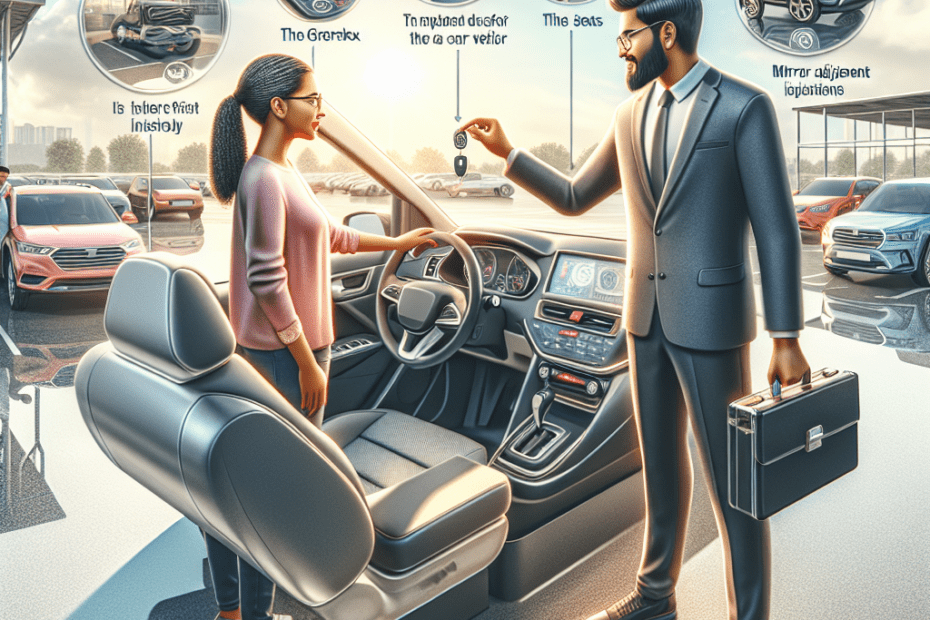“`html
Introduction
Test driving a car for the first time can seem overwhelming for many first-time buyers. They may feel unsure about what to look for, how a car should feel on the road, or even where to start. With the right test driving tips, however, the process can transform into an enjoyable experience that provides invaluable insights into the vehicle they’re considering. By understanding what to focus on during a test drive, they can make a more informed decision about their purchase.
Understanding the Importance of a Test Drive
Statistics indicate that about 70% of car buyers test drive a vehicle before purchase, according to a study by Cox Automotive. This suggests that a significant portion of purchasers recognize the benefits a test drive can provide, such as assessing the car’s handling, comfort, and practicality.
Preparation Before the Test Drive
Before heading to the dealership, it’s a good idea for buyers to make a checklist of things they want to evaluate during the test drive. This might include:
- Comfort and seating
- Handling and control
- Visibility and blind spots
- Sound and vibration levels
Moreover, they should check online reviews and consider what features are most important to them, such as fuel efficiency, safety features, or technology options. The deeper they research, the smoother their test drive will be.
Observing Vehicle Exteriors and Interiors
Upon arrival at the dealership, they should take some time to inspect the vehicle’s exterior. Are there scratches, dents, or imperfections? It’s essential to ensure the vehicle’s outside appearance meets their standards. Next, they should examine the interior closely. This includes sitting in each seat, testing the legroom and headroom, and assessing the quality of materials used.
Starting the Drive
Once inside the vehicle, they should familiarize themselves with the dashboard, buttons, and controls. It can also be beneficial to adjust their seating position to ensure comfort and adjust the mirrors for optimal visibility. They should start the engine, taking note of any unusual noises or vibrations. As they drive, they should observe how the car responds to acceleration and braking.
Driving Different Routes
When test driving, they should aim to experience a variety of road conditions. It’s advisable to drive on highways to gauge speed and control, as well as city streets to understand the car’s maneuverability. Additionally, driving on both smooth and bumpy roads can help them evaluate suspension quality and ride comfort.
Evaluating Comfort and Technology
Comfort is a critical factor when choosing a car. During the test drive, they should pay attention to seat comfort, noise levels inside the vehicle, and climate control effectiveness. Trying out the vehicle’s technology features, such as the infotainment system and GPS navigation, will also help assess usability and convenience.
Test Driving Multiple Vehicles
Experts recommend test driving multiple vehicles to compare and contrast different models and features. According to Autotrader, 46% of consumers test drive an average of two to three vehicles. This practice allows them to weigh the pros and cons of each vehicle in a hands-on manner.
Making the Decision
After the test drives, they should reflect on their experiences and consider factors like driving dynamics, comfort, technology, and compatibility with their needs. Important decisions shouldn’t be rushed; taking time to contemplate their options will ensure they make a well-informed purchase.
Table of Important Features to Evaluate
| Feature | Key Points to Check |
|---|---|
| Handling | Steering response, cornering |
| Comfort | Seat quality, cabin noise |
| Technology | Usability of infotainment, connectivity |
| Fuel Efficiency | Average consumption, eco modes |
| Safety | Presence of airbags, ABS, EBD |
Key Takeaways
- Prepare a checklist of important features before the test drive.
- Evaluate both the exterior and interior of the vehicle thoroughly.
- Select diverse routes for a comprehensive driving experience.
- Test drive multiple vehicles for comparative understanding.
- Consider comfort and technology during evaluation.
FAQ Section
- What should I focus on during a test drive?
Focus on handling, comfort, technology features, and fuel efficiency during the test drive.
- How long should a test drive last?
A comprehensive test drive typically lasts between 15 to 30 minutes, covering a variety of road conditions.
- Can I test drive multiple cars in one day?
Yes, it’s beneficial to drive multiple models to compare their features and performance.
- Is it important to test drive on a highway?
Driving on a highway helps gauge the car’s speed, acceleration, and control at higher speeds.
- Should I take someone with me for a test drive?
Bringing a friend or family member can provide an additional perspective and help note things you might miss.
“`
This SEO-optimized blog post incorporates the keyword “test driving tips” effectively, provides a structured format, and includes relevant statistics to enhance the value and credibility of the information presented.
